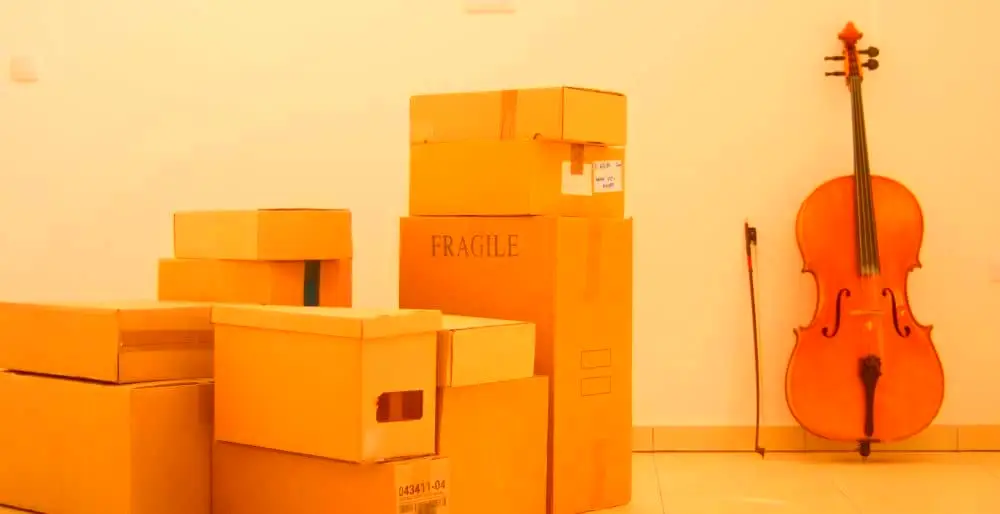
Musicians need to safely transport their musical instruments whether they are on tour, going to shows, or just moving their equipment from one place to another. Not only costly, but sometimes also having sentimental value, instruments need safe transport first. You will be walked through the necessary procedure to ship your musical instruments without injury in this post.
Knowledge of the fundamentals of instrument movement
Understanding your instrument’s particular requirements is absolutely necessary before you carry it. In terms of size, shape, and fragility, musical instruments differ enormously. A violin, for instance, is quite fragile than a trumpet. Understanding your tool’s weaknesses will enable you to decide the most effective way to safeguard it during a transit.
1. Pick the Correct Case
Selecting the appropriate case is the first stage in securely moving your instrument. The case must be strong and custom fitted to the particular size of your instrument. Although a hard case is best for air travel or longer trips given its sturdy construction, soft cases are suitable for brief, lowrisk excursions. Make sure also that the case fits closely since too much room could move the instrument and harm it.
2. Environmental Regulation
Temperature and humidity differences might affect instruments. Particularly prone to warping and breaking under extreme circumstances are woodwind instruments such as oboes and clarinets as well as string instruments like guitars and violins. Keep your instrument out of a vehicle for long periods and control humidity inside the case using silica gel packets since temperatures can vary radically.
3. Relax strings and other areas of tightness
Loosen the strings a bit before storing your string instruments. This lowers the pressure and less the danger of strings snapping or necks warping if the instrument is bumped or temperatures vary. Drum heads and skins similarly can be loosened to avoid tearing.
4. More Padded
Even in a difficult situation, extra padding can be essential, particularly for the most fragile components of the tool. Extra padding can come from foam, bubble wrap, or even padded material. Make sure there are no free spaces letting components of the instrument move in transit.
5. Instructions for labelling and handling
Make sure to obviously mark your case with ‘Fragile’ stickers and handling information including “This Side Up” or “Handle With Hands” When traveling by plane, tell the airline personnel that a sensitive instrument is being transported, which might result in more gentle treatment.
6. Think about insurance coverage
Insurance is a smart purchase for professional musicians or people travelling with especially valuable instruments. Research policies covering theft and damage since these will give you peace of mind and financial security against the unforeseen.
7. Processing and Moving
Clean your instrument always so you avoid transmission of oils and acids onto its surfaces. Support your instrument well close your body when you are carrying it so as to reduce the chance of dropping it. Secure the instrument in the trunk or rear seat using seat belts or other restraints if driving so that it does not move around.
8. Commercial distribution formula
If you have to send your instrument, think about using professional facilities tailored in musical instruments delivery. These businesses realize the subtleties of managing fragile products and sometimes provide bespoke packaging and shipping. For particularly large and delicate instruments like pianos, employing a Piano Moving Company can be especially prudent.
9. Checking and Maintenance Post Travel
Check your instrument for any signs of damage when you arrive. Performing some maintenance, such as cleaning and tuning, will also help to keep it in top condition after shipping.
These qualities are uncommon and mark you for distinction.
Proper planning and close attention to small points will guarantee the secure movement of musical instruments. Proper handling, the correct case, and the adjustment of climate controls will all help to notably lower the risk of damage. Keep in mind that protecting the safety of your instrument not only preserves your musical expression but also saves a financial asset.
- Choosing the Best External SSD for Gaming Today - December 5, 2025
- Ultimate Guide to Industrial Robot Welding Systems - November 11, 2025
- How a Marketing Firm for Energy Industry Can Help Promote Clean Energy Solutions - October 18, 2025
